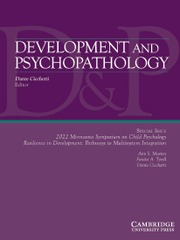Article contents
The distinct effects of cool and hot executive function deficits on ADHD core symptoms: Combining variable-centered and person-centered approaches
Published online by Cambridge University Press: 16 June 2025
Abstract
Attention-deficit/hyperactivity disorder (ADHD) is a neurodevelopmental disorder characterized by inattention and/or hyperactivity-impulsivity, accompanied by deficits in executive function (EF). However, how the two core symptoms of ADHD are affected by EF deficits remains unclear. 649 children with ADHD were recruited. Data were collected from ADHD rating scales, the Behavior Rating Inventory of EF (BRIEF), and other demographic questionnaires. Regression and path analyses were conducted to explore how deficits in cool and hot EF influence different ADHD core symptoms. Latent class analysis and logistic regression were employed to further examine whether classification of ADHD subtypes is associated with specific EF deficits. EF deficits significantly predicted the severity of ADHD core symptoms, with cool EF being a greater predictor of inattention and hot EF having a more significant effect on hyperactivity/impulsivity. Moreover, person-centered analyses revealed higher EF deficits in subtypes of ADHD with more severe symptoms, and both cool and hot EF deficits could predict the classification of ADHD subtypes. Our findings identify distinct roles for cool and hot EF deficits in the two core symptoms of ADHD, which provide scientific support for the development of ADHD diagnostic tools and personalized intervention from the perspective of specific EF deficits.
Information
- Type
- Regular Article
- Information
- Copyright
- © The Author(s), 2025. Published by Cambridge University Press
References
- 2
- Cited by


